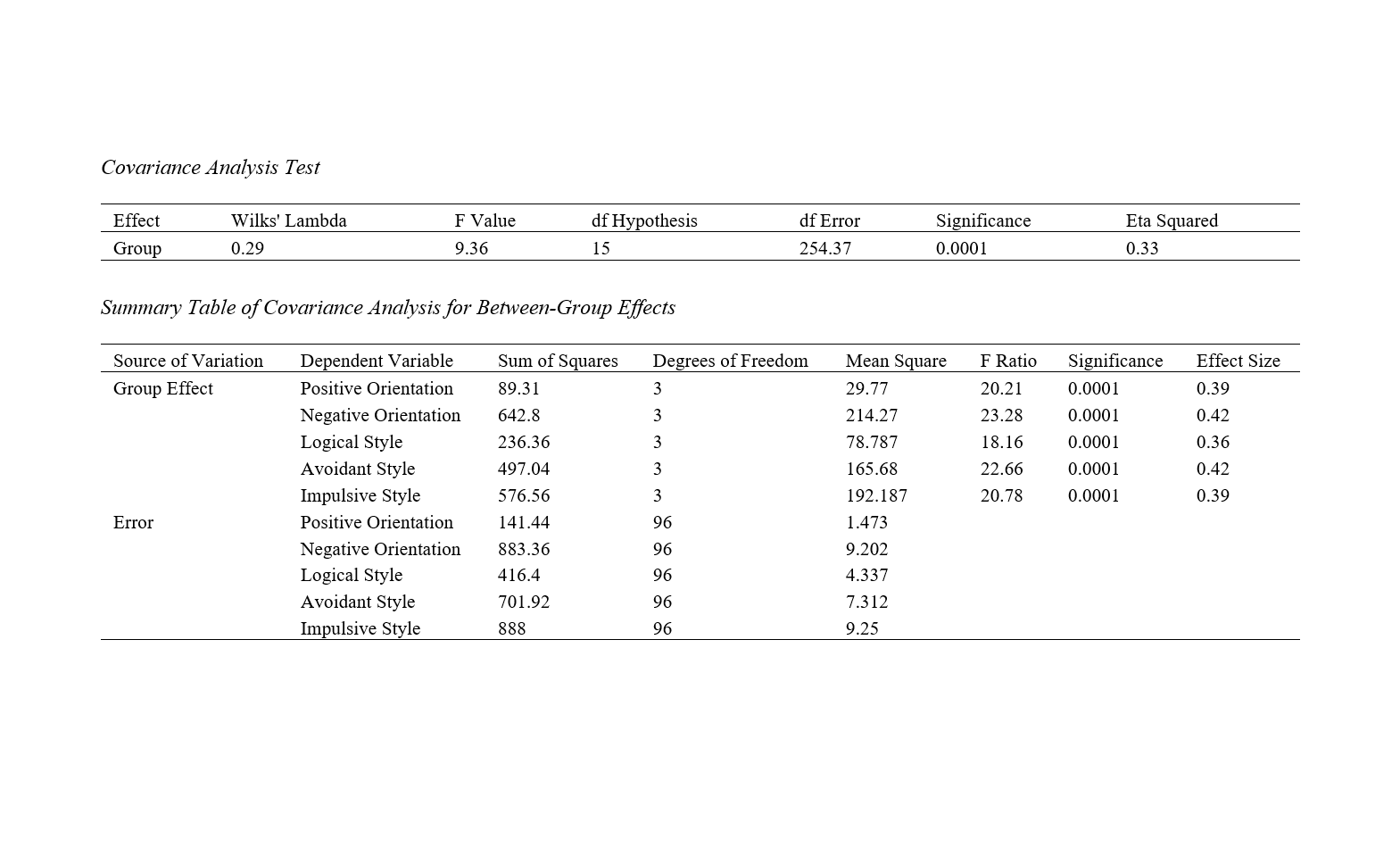Comparing the Effectiveness of Problem-Solving Skills Training Based on Tolman's and Bandura's Theories on Adolescent Girls' Problem-Solving Styles
Keywords:
Problem-solving style, problem-solving skills, studentAbstract
Objective: The purpose of this study was to compare the effectiveness of problem-solving skills training based on the theories of Tolman and Bandura on the problem-solving styles of middle school students.
Methods: The research method was quasi-experimental. The population consisted of all female first-year middle school students in Hamadan, with a sample size of 75 students (three groups of 25), selected through multi-stage cluster sampling. The D'Zurilla, Nezu, and Maydeu-Olivares problem-solving questionnaire (2000) was used for data collection. Problem-solving training sessions based on Tolman's theory followed a protocol provided by Tolman (1932), and those based on Bandura's theory followed a protocol by Bandura (1999), conducted over eight 60-minute weekly sessions for two months. Data were analyzed using Multivariate Analysis of Covariance (MANCOVA) and the Scheffé post hoc test.
Findings: There were differences in the impact of training based on these theories on students' problem-solving styles (P < .01). Training based on Tolman's theory was more effective in reducing the use of negative and impulsive problem-solving styles compared to training based on Bandura's theory (P < .01).
Conclusion: These trainings increased the use of positive and logical orientation styles and decreased the use of negative, avoidant, and impulsive styles among students.
Downloads

Downloads
Additional Files
Published
Issue
Section
License

This work is licensed under a Creative Commons Attribution-NonCommercial 4.0 International License.




















